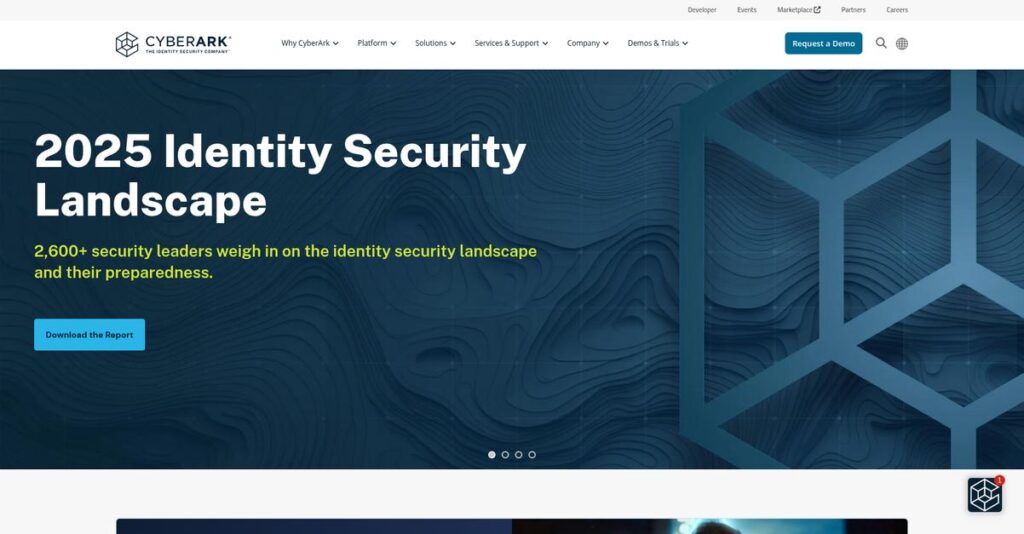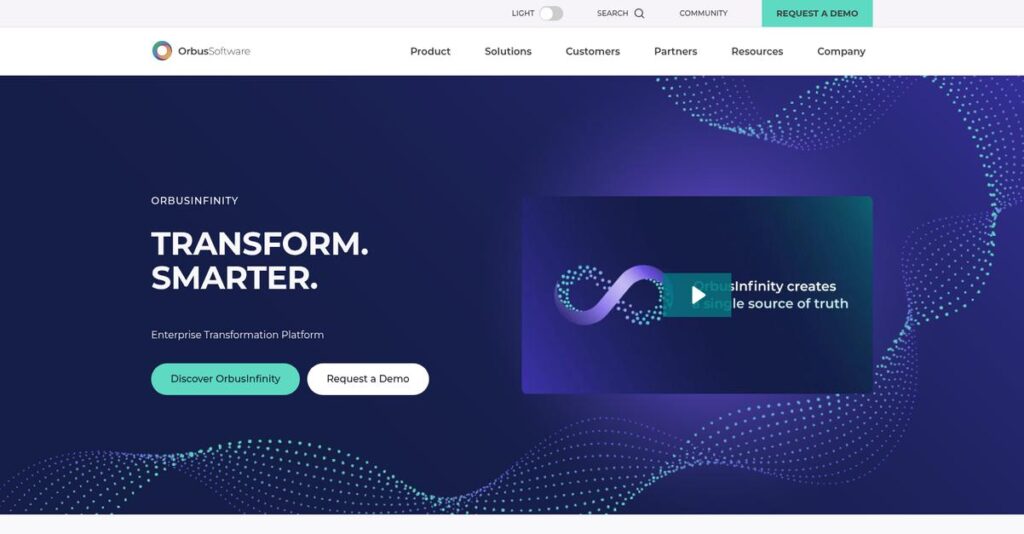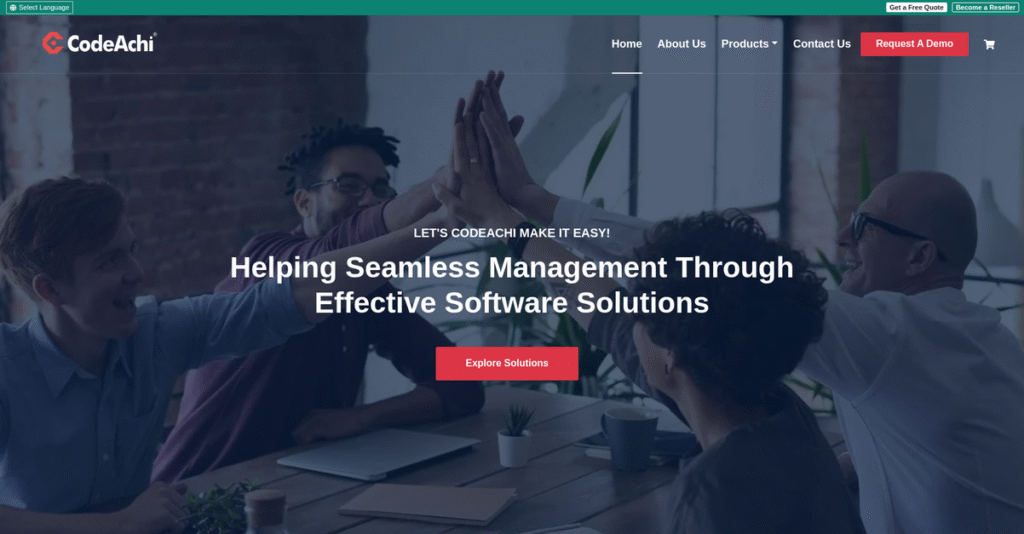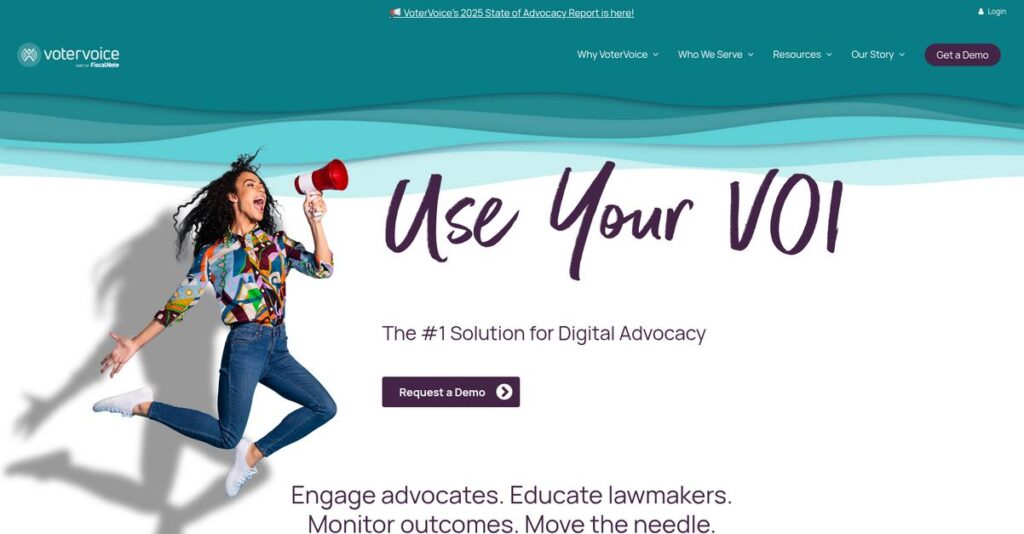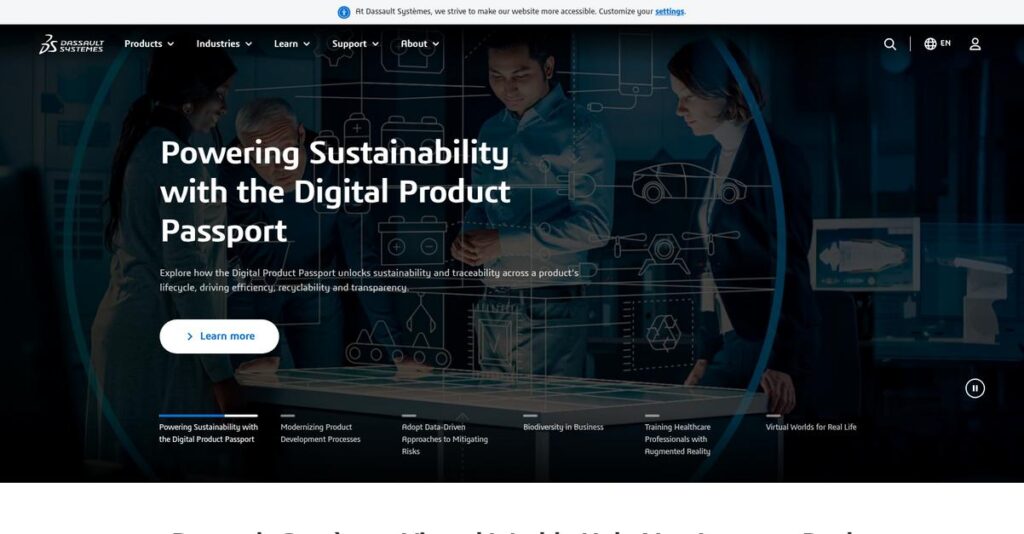Managing expenses shouldn’t slow you down.
If you’re juggling receipts, tracking policy violations, or struggling with clunky expense systems, you’re probably missing out on better ways to take control. That’s why you’re considering Zoho Expense.
After researching the market, I realized that manual expense entry still eats up hours every week and holds back your finance team from focusing on real analysis.
Zoho Expense approaches this differently, offering automation from receipt capture to card reconciliation, with built-in policy controls and deep integration across accounting, HR, and project workflows. My analysis found its one-system model can handle even tricky travel and compliance pain points that others can’t.
In this review, I’ll break down how Zoho Expense helps you reclaim time and accuracy in expense management.
You’ll see, in this Zoho Expense review, a side-by-side look at features, pricing, integration, and real alternatives to help you weigh your choices.
You’ll come away knowing the features you need to make a confident buy or trial decision.
Let’s dive into the analysis.
Quick Summary
- Zoho Expense is an all-in-one platform that automates expense reporting, enforces spending policies, and manages travel bookings with deep Zoho ecosystem integration
- Best for small to mid-market companies needing expense and travel management with tight budget control
- You’ll appreciate its proactive policy enforcement and efficient corporate card reconciliation that reduce manual work and overspending
- Zoho Expense offers a free plan for up to 3 users plus tiered paid plans starting at $5 per active user per month with a 15-day Enterprise trial
Zoho Expense Overview
Zoho Corporation has been around since 1996, famously bootstrapped from Chennai, India. What impressed me during my research is their clear, long-term mission: building a complete, deeply integrated operating system for business.
My analysis shows they target small and mid-market companies needing powerful tools without the typical enterprise complexity. Their real strength is how Zoho Expense fits into the vast ecosystem, saving you the cost and hassle of managing disconnected third-party apps.
What’s more, they’re always enhancing the platform with practical AI via their “Zia” engine. This continuous improvement is a critical key takeaway from my Zoho Expense review.
Unlike single-function tools like Expensify or giants like Concur, Zoho’s advantage is its all-in-one platform value. You get integrated travel, card reconciliation, and policy controls built-in, which helps you avoid shocking enterprise price tags.
I found they work with a massive global base of SMBs and mid-market firms, especially those looking to consolidate their entire software stack onto one efficient, unified platform.
- 🎯 Bonus Resource: While we’re discussing financial management and enterprise systems, my article on best enterprise legal management software covers tools to gain financial control and mitigate risks.
From my evaluation, their strategy centers on deep integration and exceptional affordability. For you, this directly aligns with your need to connect expense data to accounting, projects, and HR systems without messy, unreliable workarounds.
Now let’s examine their capabilities.
Zoho Expense Features
Manual expense tracking is a productivity drain.
Zoho Expense features are actually big on automating the entire expense management process, helping you streamline everything from receipt capture to corporate card reconciliation. Here are the five core Zoho Expense features that solve real business problems.
1. Automated Expense Creation and Management
Still typing out expense reports by hand?
Manual expense entry is incredibly tedious and prone to errors, often consuming valuable time your employees could spend on core tasks.
This feature eliminates that pain point by letting you auto-scan receipts or forward them via email. From my testing, the Autoscan OCR is impressively accurate, automatically pulling data. This core feature drastically reduces the time your team spends creating and submitting reports.
This means faster reimbursements for your employees and fewer manual corrections for your finance team.
2. Advanced Policy Enforcement and Compliance
Tired of catching out-of-policy spending too late?
Discovering policy violations after expenses are submitted leads to frustrating back-and-forth and potential budget overruns for your company.
Zoho Expense allows you to build granular spending policies that check every expense in real-time, stopping violations before they occur. Here’s what I found: you can set hard limits or soft warnings based on roles or categories. This feature gives finance teams proactive control.
This means you can ensure compliance effortlessly, simplify audits, and gain peace of mind knowing your budget is protected.
3. Integrated Travel and Itinerary Management
Is business travel booking a fragmented mess?
Managing travel often involves juggling multiple tools, leading to disjointed processes and a lack of clear visibility into pre-trip spending.
This unique feature centralizes your entire travel lifecycle, letting employees request approvals and book flights and hotels directly within the platform. What I love about this approach is how it ensures bookings align with company policies from the start.
This means you get a truly seamless travel experience for your team and complete visibility into all travel-related expenditures.
4. Corporate Card Reconciliation
Struggling to match corporate card transactions to receipts?
Manually reconciling corporate card statements with individual employee receipts is a notoriously time-consuming and error-prone process for finance teams.
Zoho Expense simplifies this by connecting directly to card feeds, intelligently matching transactions to submitted receipts and automatically flagging unmatched entries. From my evaluation, this feature dramatically cuts down reconciliation time, boosting efficiency.
This means your accounting books close faster, and you gain a real-time, accurate view of all your corporate card liabilities.
5. Deep Integration with the Zoho Ecosystem
Are your expense, accounting, and HR data silos?
Disconnected systems create data redundancies and require manual data transfers, leading to inefficiencies and an incomplete financial picture for your business.
This is where Zoho Expense truly shines; it links directly with other Zoho products like Books, People, and Projects, creating a single source of truth. What impressed me most is how expenses automatically sync for accurate project costing.
This means you can automate end-to-end workflows, eliminate data silos, and gain comprehensive insights across your entire business operations.
Pros & Cons
- ✅ Robust automation for expense creation and corporate card reconciliation.
- ✅ Proactive policy enforcement prevents out-of-policy spending effectively.
- ✅ Seamless integration with other Zoho applications offers a unified platform.
- ⚠️ Initial setup of complex policies and approval workflows requires careful planning.
- ⚠️ User interface (UI) can feel less modern compared to newer competitors.
What I love about these Zoho Expense features is how they work together to create a cohesive expense and travel management system. This deep cohesion ensures your financial data flows effortlessly across departments, eliminating manual tasks.
Zoho Expense Pricing
Tired of navigating opaque pricing structures?
Zoho Expense pricing is remarkably transparent, offering a clear user-based subscription model that helps your business budget predictably and understand its true expense management costs.
| Plan | Price & Features |
|---|---|
| Free Plan | $0, forever • Up to 3 users • 100 receipt scans/month (5GB storage) • Basic expense reporting & mileage tracking • Zoho Books & QuickBooks Online integration |
| Premium Plan | $5 per active user/month (billed annually) or $8 (monthly) • Unlimited users & receipt scans • Custom approval workflows & policies • Corporate card reconciliation • Advanced analytics |
| Enterprise Plan | $8 per active user/month (billed annually) or $12 (monthly) • Integrated travel booking module • Custom roles and permissions • AI-powered fraud detection • Advanced customization options |
1. Value Assessment
Real value for your money.
From my cost analysis, Zoho Expense offers exceptional value, especially with its “active user” model, meaning you only pay for employees who actually submit expenses. This makes their pricing incredibly beneficial for occasional travelers, avoiding the high costs of per-employee models. It’s a competitive approach designed to keep your budget lean.
This means your monthly costs stay predictable and align precisely with your team’s actual usage, optimizing your expense budget.
- 🎯 Bonus Resource: While we’re discussing managing business operations and systems, understanding how to streamline specialized processes with a Laboratory Information Management System can be highly beneficial.
2. Trial/Demo Options
Evaluate before you commit.
Zoho Expense offers a generous 15-day free trial of its Enterprise plan, giving you full access to advanced features. What I found valuable is how this trial lets you test travel booking and policy enforcement within your specific workflows. You can experience the platform’s capabilities before making any financial commitment, ensuring it meets your needs.
This allows you to thoroughly assess the system and its impact on your budget before committing to full pricing.
3. Plan Comparison
Choose the right fit for your team.
The Free Plan is perfect for very small teams needing basic functionality, while the Premium Plan suits most SMBs with its unlimited features. What stands out is how the Enterprise plan adds comprehensive travel management for mid-market companies. This tiered approach helps you match pricing to your team size and specific functionality requirements, preventing overspending.
This guidance helps you match Zoho Expense pricing to your actual usage requirements rather than paying for unnecessary features.
My Take: Zoho Expense’s pricing strategy is highly competitive and transparent, making it ideal for budget-conscious SMBs and mid-market companies seeking scalable expense management.
The overall Zoho Expense pricing reflects transparent value without hidden surprises, helping you budget wisely.
Zoho Expense Reviews
Is Zoho Expense right for your business?
My analysis of Zoho Expense reviews provides balanced insights from real user feedback across platforms. I’ll help you understand what actual customers think and how it impacts your decision.
1. Overall User Satisfaction
Users show high satisfaction overall.
Zoho Expense generally earns high ratings across G2, Capterra, and TrustRadius. From my review analysis, you’ll find consistent praise for its value and comprehensive features. Users appreciate getting multiple functions in one affordable tool, often reporting significant time savings for both employees and finance departments.
This strong overall sentiment suggests a robust product foundation that delivers on its promises, making it a reliable choice for many businesses.
- 🎯 Bonus Resource: While we’re discussing financial operations, understanding best spend management software is equally important for overall financial health.
2. Common Praise Points
Automation and integrations impress users.
Review-wise, users consistently praise Zoho Expense’s robust automation capabilities, particularly Autoscan and corporate card reconciliation, drastically reducing manual entry. What stands out is its seamless integration with Zoho Books, simplifying accounting tasks. Many also appreciate the fair “active user” pricing model.
These strong points mean you can expect significant time savings and improved financial data accuracy, benefiting your entire finance workflow.
3. Frequent Complaints
Some users face initial hurdles.
Common complaints often center on a noticeable learning curve, especially when setting up complex policies and approval workflows. From customer feedback, the user interface is sometimes seen as less modern or intuitive compared to newer competitors, requiring more initial adaptation.
These issues aren’t typically deal-breakers but indicate you should budget sufficient time for initial training and careful setup planning.
What Customers Say
- Positive: “Integration with Zoho Books is the best part; expenses automatically sync, saving us significant time on data entry and reconciliation.”
- Constructive: “It’s powerful, but my team took longer to get comfortable than simpler tools. Initial rule setup needs careful planning.”
- Bottom Line: “Having travel booking and expense reporting in one place is fantastic. Employees book flights in-app, giving us full visibility on spend.”
Overall, Zoho Expense reviews paint a picture of a powerful, value-driven solution for expense management. My analysis suggests its strengths generally outweigh its learning curve for most users.
Best Zoho Expense Alternatives
Navigating expense management choices can be tricky.
The best Zoho Expense alternatives include several strong options, each better suited for different business situations and priorities. From my competitive analysis, I found key factors to consider for your specific needs.
- 🎯 Bonus Resource: Speaking of financial tools, my guide on best fixed asset accounting software offers valuable insights.
1. SAP Concur
Is your organization a global enterprise?
Concur stands out for its unparalleled global capabilities and deep ERP integrations, essential for large, multinational corporations. What I found comparing options is that Concur offers robust compliance for complex operations, making it ideal when your scale justifies the higher cost and complexity. It’s a powerful alternative.
Choose Concur if you are a large, global enterprise with complex compliance and integration needs outweighing budget concerns.
2. Expensify
Prioritizing employee-friendly expense submission?
Expensify shines with its exceptional OCR technology and a truly simple, intuitive interface designed for the end-user. Alternative-wise, Expensify streamlines employee expense reporting like no other, making it a strong choice if user adoption and speed are your top concerns for basic expensing functionality.
You’ll want to consider Expensify when your main goal is making expense submission as fast and painless as possible for employees.
3. Ramp
Seeking a modern corporate card integration?
Ramp redefines expense management by bundling ‘free’ software with its corporate card, focusing on real-time spend control. This alternative gives you a fully integrated card and expense solution, ideal if you’re ready to centralize your corporate card program and seek modern financial tech. My analysis shows this unified approach is compelling.
Choose Ramp if you want a bundled card-and-software solution and are comfortable switching your primary corporate card provider.
Quick Decision Guide
- Choose Zoho Expense: SMBs and mid-market needing an all-in-one platform with Zoho ecosystem integration.
- Choose SAP Concur: Large, global enterprises with complex compliance and extensive ERP needs.
- Choose Expensify: Prioritizing extremely fast, user-friendly expense submission for employees.
- Choose Ramp: Businesses wanting a modern, free expense software bundled with corporate cards.
The best Zoho Expense alternatives really depend on your business size, specific operational needs, and budget rather than just feature lists. You have excellent options to choose from.
Setup & Implementation
Implementing new software can feel daunting.
Based on my Zoho Expense review, its deployment approach is generally user-friendly for smaller businesses, but complexity scales with organizational size. Here’s what you’re looking at to ensure a smooth transition and adoption.
- 🎯 Bonus Resource: Speaking of forecasting talent needs, my guide on best workforce planning software explores tools to help.
1. Setup Complexity & Timeline
It’s not always instant plug-and-play.
For small businesses, Zoho Expense implementation is straightforward; you can often get up and running within a day. Larger organizations with complex approval hierarchies and custom policies will need several days of meticulous planning and configuration, as complexity scales with your specific needs.
You’ll need to define your expense policies, approval flows, and data requirements upfront. This clear mapping prevents costly reconfigurations later.
2. Technical Requirements & Integration
What about existing systems and data?
Zoho Expense is cloud-based, so hardware requirements are minimal – mostly devices for users. What I found about deployment is that integration with your accounting system, especially Zoho Books, is seamless. However, complex ERP integrations require careful mapping for smooth data flow and proper policy enforcement.
Ensure your IT team can assist with any custom integration points. Proper data migration and validation are crucial for accurate financial reporting.
3. Training & Change Management
Will your team actually use it?
The basic expense submission process is intuitive, minimizing employee learning curves. However, for administrators, mastering the full suite of controls and policy configurations requires dedicated time. Implementation-wise, successful adoption hinges on proactive user training and clear communication about new workflows.
Plan for clear internal communication and provide accessible training materials. Designate internal champions to support your users and address early questions.
4. Support & Success Factors
What if you hit a snag?
Zoho offers solid email and phone support during business hours, complemented by a comprehensive knowledge base. For standard queries during implementation, support is responsive. However, be prepared that complex integration issues might take longer to resolve, requiring more detailed information from your side to assist.
From my implementation analysis, define clear goals and assign a dedicated project owner. Continuous policy review and user feedback loops ensure long-term success.
Implementation Checklist
- Timeline: 1 day to several days, depending on scale
- Team Size: Savvy admin; IT support for complex integrations
- Budget: Internal staff time for setup and training
- Technical: Accounting system integration; ERP for enterprise
- Success Factor: Careful policy mapping and user adoption
Overall, Zoho Expense implementation is manageable for most businesses, scaling in complexity with your organizational needs. Success hinges on thorough planning and proactive user engagement, making it a valuable investment when done right.
Who’s Zoho Expense For
Is Zoho Expense the right fit for your operation?
This Zoho Expense review analyzes target users, helping you understand if its features and pricing align with your specific business profile, team size, and daily operational needs.
1. Ideal User Profile
Ideal for SMBs needing unified expense control.
If you’re an SMB or mid-market company, especially within the Zoho ecosystem (e.g., Zoho Books), native integrations deliver unmatched efficiency. From my user analysis, cost-conscious organizations gain immense value from its active user pricing, consolidating tools for proactive spending control.
You’ll see significant time savings and better spending compliance by leveraging its integrated features and robust policy engine.
2. Business Size & Scale
Optimal for growing small to mid-sized teams.
Your business fits best if you’re an SMB or mid-market company managing a growing team, typically 10-250 employees. What I found about target users is that it balances powerful features with affordable scalability, avoiding overwhelming solo users while still providing depth.
You’ll assess a good fit if you need robust expense management that grows with your evolving team without high enterprise costs.
3. Use Case Scenarios
Core for consolidated expense and travel.
Zoho Expense excels if your primary need is automating expense reports, enforcing spending policies, and centralizing travel booking. From my analysis, it works best for proactive budget control and reducing manual data entry for finance teams, bringing full visibility to employee spending.
Your use case aligns if you seek to streamline expense workflows, reduce reconciliation time, and gain greater financial oversight through automation.
4. Who Should Look Elsewhere
Not for global enterprises or solo users.
This isn’t for very large, global enterprises needing highly specialized compliance or deep ERP integration (like SAP Concur). From my user analysis, solo entrepreneurs might find it overly robust, better served by simpler, mobile-only expense apps for occasional use.
Consider enterprise-grade solutions like SAP Concur for complex global needs, or a basic mobile app if your needs are minimal.
Best Fit Assessment
- Perfect For: SMBs and mid-market companies already in Zoho ecosystem or seeking consolidation
- Business Size: Small to medium-sized businesses and mid-market (10-250 employees)
- Primary Use Case: Automating expense reports, enforcing policies, consolidating travel booking
- Budget Range: Active user pricing, exceptional value without enterprise costs
- Skip If: Very large global enterprises or solo users needing minimal functionality
Overall, this Zoho Expense review highlights that your success hinges on aligning its all-in-one capabilities with your SMB or mid-market needs. It’s a strong fit if you seek integrated, cost-effective expense management.
Bottom Line
Zoho Expense offers remarkable value.
My Zoho Expense review offers a clear, honest assessment, guiding you through its core strengths and limitations. I will help you determine if it aligns with your business needs.
1. Overall Strengths
Automation and integration truly shine.
Zoho Expense excels with its robust automation, streamlining expense reporting and policy enforcement for your team. Its seamless integration with Zoho Books and the broader Zoho One suite is a major advantage. From my comprehensive analysis, this deep connectivity saves significant time for finance teams and employees alike, consolidating functions effectively.
These powerful capabilities translate directly into improved operational efficiency, significantly reduced manual effort, and better financial control for your organization.
2. Key Limitations
Consider the initial learning curve.
While powerful and feature-rich, users occasionally note a learning curve, especially when setting up complex policies, approval workflows, or utilizing all advanced features. The user interface, while functional, might not feel as modern or intuitive as some newer, more focused competitors. Based on this review, initial setup requires careful planning to maximize its full potential.
These aren’t insurmountable deal-breakers, but rather manageable trade-offs demanding a thoughtful investment in proper training and strategic setup time.
3. Final Recommendation
Highly recommended for specific needs.
You should choose Zoho Expense if you’re an SMB or mid-market company seeking a comprehensive, affordable expense management solution, especially if you’re already invested in the Zoho ecosystem. From my analysis, it delivers exceptional value for money, integrating perfectly with accounting for highly streamlined financial operations.
Your ultimate decision should weigh its robust feature set against the initial setup effort required, ensuring a confident move forward.
Bottom Line
- Verdict: Recommended for SMBs and Zoho users
- Best For: Small to mid-sized businesses prioritizing integrated expense management
- Biggest Strength: Seamless integration with Zoho Books and robust automation
- Main Concern: Initial learning curve for complex policy setup
- Next Step: Try the free trial to explore comprehensive features
This Zoho Expense review confidently assesses its strong position for businesses prioritizing integrated, cost-effective expense management. My recommendation reflects high confidence in its overall value proposition.

